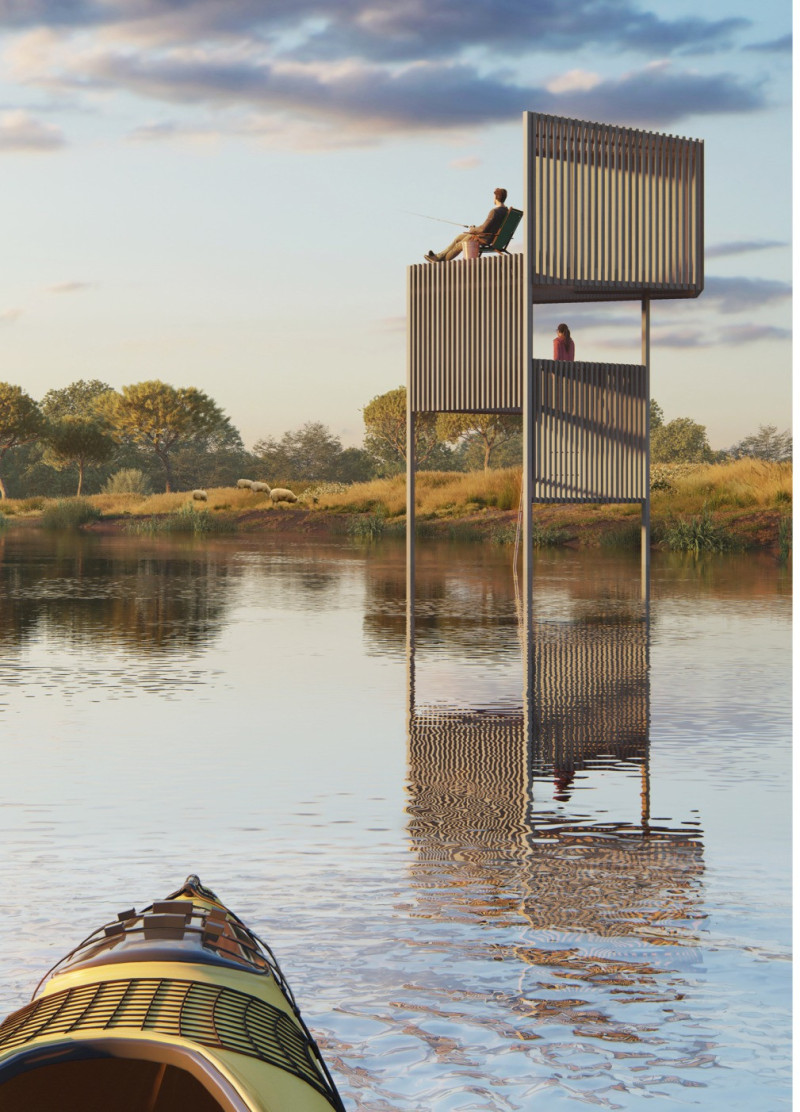5 key facts about this project
The Liveable Pontoon is situated in an ecological area where seawater and freshwater meet, creating the Salt Marshes. This location plays a vital role in shaping the design, which aims to create a strong connection between the living space and nature. The overall concept centers around an open layout that encourages interaction with the environment, providing a simple and functional space for its occupants.
Design Concept
At the core of the design is an innovative approach that removes traditional barriers like walls and windows. Instead of isolating spaces, the structure uses vertical elements to define areas while keeping them connected. This openness allows natural light and airflow to flow freely throughout the living spaces. The layout is organized into overlapping volumes, each serving specific functions. This arrangement enhances the flow and usability of the interiors.
Materiality
Material choices are informed by a commitment to sustainability and environmental awareness. The design employs a combination of curtains and recycled wood panels, which function as a flexible facade. This design choice not only facilitates interaction with the surroundings but also helps maintain privacy. The floor is constructed from terracotta brick made from the local marsh soil. This material connects the structure to its landscape while providing thermal mass to enhance indoor comfort.
Sustainability Features
The project integrates various self-sufficient systems that contribute to its sustainability goals. Energy is generated by utilizing the movement of ocean currents, which powers a system for electricity needed for lighting and water filtration. Rainwater is collected from the roof and directed into a reservoir in the canal. This system ensures that the water stays cool while undergoing treatment for drinking.
The structure floats above the marshland, allowing for both passive and active engagement with the surrounding ecosystem. It creates an environment where occupants can interact with nature while experiencing the tranquil beauty of the Salt Marshes.



















































